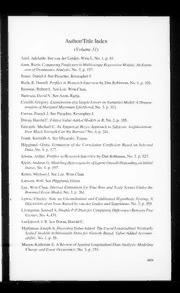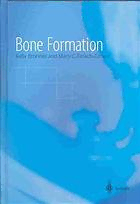
Preview Bone formation
• Molecular Regulation of Osteoblast Differentiation Prasanna Bukka, Mare D. MeKee, and Andrew C. Karaplis Introduction proliferation, these cells exit the cell cyde and undergo further differentiation to a hyper trophie form, characterized by the decreased Bone, the major component of the skeleton, is expression of Type II collagen, expression of formed by two distinct ossification pro ces ses, Type X collagen, calcification of the extracellular intramembranous and endochondral. Intra matrix, and apoptotic death. Formation of membranous bone arises direcdy from mes mineralized cartilage is vital as it favors the enchymal cells condensing at ossification cen vascular invasion of the previously avascular ters and transforming direcdy into osteoblasts. cartilaginous anlage from the perichondrium. This form of ossification gives rise to the flat Osteoblasts, which originate from mesenchymal bones of the skull, parts of the davide, and the precursors, and osteodasts, whieh are derived periosteal surface of long bon es. Endochondral from the hematopoietic compartment, also ossification differs from the intramembranous enter the zone of hypertrophy along with blood component in that it is formed in the presence vessels. Osteodasts proceed to degrade the cal of a cartilaginous blastema. It is a complex, cified cartilage matrix, while osteoblasts begin multistep process requiring the sequential depositing the bone matrix, that consists pri formation and degradation of cartilaginous marily of type I collagen, with the cartilage structures that serve as templates for the devel matrix being used as a scaffold. oping axial and appendicular bones. This for In the past, progress toward understanding mation of calcified bone on a cartilage scaffold the hierarchy of gene expression and mecha occurs not only during skeletogenesis but is an nisms defining osteoblast differentiation has integral part of postnatal growth and fracture been, for the most part, advancing slowly as the repair (Figure 1.1). major focus of research centered on skeletal At the onset of skeletal development, undif patterning rather than the differentiation of ferentiated mesenchymal cells come together to mesenchymal progenitor cells. Later on, interest form condensations that have the shape of the concentrated on chondrocyte biology, more skeletal elements they prefigure, followed by than on that of the osteoblast. It would seem overt differentiation along either the osteoblas that the major impetus for studying the bone tie (intramembranous) or the chondrocytic forming cell was its apparent resemblance to (endochondral) pathway. Chondrocytes deposit the fibroblast, with whieh it shares a wide variety an extracellular matrix composed of Type IIb, of expressed gene transcripts. Therefore, it is IX, and XI collagen and several other matrix not surprising that comparatively more is proteins that are cartilage-specific. Following known about the differentiation program of F. Bronner et al., Bone Formation © Springer-Verlag London 2004 2 Bone Formation Molecular Regulation of Osteoblast Differentiation 3 chondrocytes than osteoblasts. In fact, less than The Osteoblast 10 years ago, the bone morphogenetic proteins (BMPs) and the collagens were the only molec Differentiation Program ular entities known to be involved in the process of osteogenic differentiation. More recently, however, significant strides have been made The Early Progenitor toward understanding the hierarchy of gene expression and mechanisms that drive osteo Skeletal cells are derived from three distinct blast differentiation. A number of factors regu embryonic cell lineages: neural crest cells con lating this process have now been identified and tribute to the craniofacial skeleton; sclerotome characterized, findings that have furthered our cells from somites give rise to the axial skeleton; and lateral plate mesoderm cells form the knowledge about the origin and function of appendicular skeleton (reviewed in Karaplis these unique skeletal cells. [42]). Osteoblasts originate from immature mes In this review, we outline a number of fac enchymal cells, which could also give rise to tors critically implicated in the process of chondrocytes, muscle, fat, ligament, and tendon osteoblast differentiation. The hierarchy in ceHs [6,26]. These mesenchymal cells need to this developmental pathway is delineated, undergo several transitional steps, the exact although at times oversimplified because of gaps number remaining imprecise at present, before in our knowledge. We begin with those factors becoming mature osteoblasts. Each transition that regulate early progenitor differentiation requires the activation or suppression of critical from mesenchymal precursors, followed by key molecular elements for the progression of factors involved in the commitment of these differentiation to occur (Figure 1.2). As will cells to the osteoblast lineage and those that become apparent, the pathways of chondrocyte characterize the osteoblast phenotype. Finally, and osteoblast differentiation are intertwined, we discuss some novel and rather provocative yet at a very critical instant, a rather restricted concepts that pertain to hormonal and number of genes are recruited to alter a precur centrallhypothalamic regulation of osteoblast sor cell's ability to commit to a particular ceH differentiation. lineage. +- Figure 1.1 Histology of bone cells and extracellular matrix by light and electron microscopy. (A) Light micrograph illustrating osteoblast lineage celis responsible for bone formation during intramembranous ossification. Osteoblast precursors derive either from the periosteal membrane (Perl. from perivascular connective tissue or from interna I bone marrow compartments, and form a con tiguous monolayer of differentiated osteoblasts (Ob) at bone-forming surfaces. Osteocytes (Oct) represent another differentiated state of the osteoblastic lineage foliowing their entrapment within secreted (and mineralized) bone matrix. BV, blood vessel. Decalcified plastic section of l-month-old rat mandibular alveolar bone. Bar equals 50 ~m. (B) Light micrograph showing bone cells related to endochondral ossification in the primary spongiosa region just subjacent to the cartilaginous growth plate found in grow ing long bones.ln elose proximity to blood vessels (BV) and the marrow compartment, osteoblasts (Ob) deposit bone onto spicules of calcified cartilage (Cart), where a large percentage of this composite calcified tissue (mixed spicules) is ultimately resorbed by osteo elasts (Oel). As in intramembranous ossification, osteocytes (Oct) become trapped in the bone matrix, whereas the cartilage in this area is acellular. Decalcified plastic section of the proximal region of a l-month-old rat tibia. Bar equals 50 ~m. (C) Transmission electron micrograph showing the ultrastructure of a portion of a single osteoblast and its associated extracellular bone matrix deposited onto calcified cartilage (Cart) during endochondral ossification. Prominent cytoplasmic organelles indicative of high secretory activity inelude the Golgi apparatus (Golgi) and extensive rough endoplasmic reticulum (rER). Bone matrix secreted by osteoblasts initially accumulates as an unmineralized osteoid (Os) rich in type I collagen fibrils on the surface of calcified cartilage (here showing type 11 collagen fibrils and proteoglycans), where the two distinct tissues are separated by a collagen-deficient cement line (CL) containing predominantly non-collagenous proteins. Nu, nueleus. Decalcified plastic section ofthe proximal region of a l-month-old rat tibia. Bar equals 1 ~m. (D) Transmission electron micrograph of undecalcified mandibular alveolar bone (intramembranous bone) showing min eralization of bone matrix such that two extracellular compartments can be readily identified - namely, the unmineralized osteoid (Os) compartment, and the mineralized bone (Min. Bone) compartment. The inorganic mineral phase of bone consists of carbonate substituted hydroxyapatite crystals in the nanometer-sized range that form both within, and between, the collagen fibrils. Nu, nueleus; rER, rough endoplasmic reticulum. Bar equals 1 ~m. 4 Bone Formation Dlx5/Msx2 Msx1, -2 Fra-1 D, FasB BMP2 Ihh c-Fas, Fgf18, Lrp5 ?X 1 c-Abl, pRb Osteocalcin Cbfa1 l Cbfa1 Leptin PTH/PTHrP Osx .1 1 Sox9 Msx2 Cbfa1 ~ ...•" , --+ ....." , Pr~ ,.. Osteoblast Bone Apoptosis osteoblast formation ~SOX9 Ep~helial Condensation mesenchymal Chondrocyle differentiation interaction ~--+ RC PC Pre-HC HC ~ --I Tob BMP2, 4, 7 .- Shh T ............................. ~ Noggin Figure 1.2 Schematic representation of the network of signaling factors that control the formation of mesenchymal condensations and their subsequent transition through the chondrocytic and osteoblastic differentiation programs. Xr epresents unknown factor(s) involved in the activation of Cbfa 1e xpression in intramembranous bone, distinct from Ihh (endochondral). Osteoblast development in the bone collar is illustrated in the lower half of the diagram. This process, although often described as being similar to intramem branous ossification, differs genetically from it. The BMPs are members of the transforming disrupted BMP genes would add insight into growth factor-ß(TGFß) superfamily of proteins their role in skeletogenesis. For the most part, that act as morphogens to influence fundamen however, these in vivo studies have failed to tal processes such as mesoderm patterning, left achieve this objective. While they have solidified right asymmetry, neurogenesis, development of understanding of the role BMPs play in skeletal the kidney, gut, lung, and teeth, as well as bone patterning and joint formation, they have pro formation [34]. BMPs are said to control the vided !ittle or no evidence to support a direct commitment of mesenchymal pluripotent cells effect on osteoblast biology. In fact, the only to the osteoblast phenotype and to induce BMP-deficient animal that demonstrates a bone ectopic bone formation in vivo [72]. The molec phenotype, the Bmp3 mutant mouse, has a high ular signaling of BMPs is through heteromeric rather than a low bone mass [14]. Of course, this complexes of transmembrane type I and type II rather general lack of a bone phenotype needs to Ser/Thr kinase receptors that then propagate be interpreted cautiously as it may merely reflect signals to the Smad proteins, which mediate functional redundancy among the various BMP-induced signals from the cell surface to the members of this family. Alternatively, BMPs may nucleus. simply regulate skeletal patterning per se rather Because various members of the BMP family than specifically osteoblastogenesis. are expressed during skeletogenesis (reviewed Whatever in vivo evidence exists that BMPs in Yamaguchi et al. [91]), it was initially influence osteoblast proliferation is indirect anticipated that skeletal analysis of mice with and sterns from studies on Tob (transducer of Molecular Regulation of Osteoblast Differentiation 5 ErbB-2), a member of a novel antiproliferative (Ptc), a 12-transmembrane protein wh ich is the protein family (Tob/BTG proteins) that sup binding subunit [60, 79], and Smoothened presses cell growth [61]. Overexpression of Tob (Smo), a seven-transmembrane protein which is mRNA in osteoblast lineage cells has indicated the signaling subunit. In the absence of Hh, Ptc that the protein plays a prominent role in the associates with Smo and inhibits its activities. In biology of these cells. Moreover, the observation contrast, binding of Hh to Ptc relieves the Ptc that mice carrying a targeted deletion of the Tob dependent inhibition of Smo [67]. Signaling gene have increased numbers of osteoblasts and then ensues and includes downstream compo greater bone mass has identified this protein as nents such as the Gli family of transcriptional a negative regulator of BMP/Smad signaling in activators. The three Gli genes (Gli, Gli2, and osteoblasts [92]. Orthotopic bone formation Gli3) encode a family of DNA-binding zinc in response to BMP-2 is also increased in finger proteins with related target sequence Tob-deficient mice; this suggests that Tob-I- specificities. osteoblasts are hypersensitive to BMPs. How Shh induces expression of osteoblastic does Tob modify the process of osteoblasto markers and ectopic bone formation when genesis? Tob represses BMP-induced, Smad injected into muscle and commits C3HlOTl/2 dependent transcription in osteoblasts through mesenchymal cells toward the osteoblastic its physical association with Smad proteins. lineage [75]. It appears that Shh increases the Specifically, it interacts with Smad4, as well as responsiveness of the cells to BMP-2 signaling Smadl, 5, and 8, thereby initiating a negative and hence induction of osteoblast differentia feedback mechanism to allow a precise and tion. Interestingly, only mature mesenchymal timely regulation of BMP signaling and proper cells respond to Shh-potentiated BMP-2 signal bone formation. In conclusion, although there is ing, whereas the more differentiated pre no direct evidence that BMPs specifically alter osteoblastic MC3T3 cells do not. osteoblast proliferation, the findings in the Tob Although in vitra evidence supports the con deficient mice favor some role for these proteins tention that Shh has a physiological role in in osteoblast proliferation. osteoblast biology, Shh mRNA is not detected In co nt rast to these in vivo findings, work in in pluripotent mesenchymal cells and in sites vitro has shown that BMP-2 increases commit of skeletal formation in the developing mam ment of cultured human marrow stromal cells malian embryo. Moreover, targeted disruption to the osteoblast phenotype by increasing of Shh suggests the protein plays a more diverse CBFAI mRNA expression [29]. CBFAI is recog developmental role, as the Shh-I- mutant mouse nized as the potential transcriptional regulator displays abnormalities in many embryonie of osteoblast differentiation and therefore a structures, induding severely compromised measure of a cell's commitment to the osteoblast limbs [12]. In the lateral plate, Shh gene expres celliineage (see below). mRNA levels of other sion is localized to the posterior margin of ver osteoblastic markers, such as Alkaline Phos tebrate limb buds and therefore Shh is likely to phatase, Type I collagen, and Osteocalein, also be a key signal in establishing anterior-posterior increase with treatment of BMP-2 in a dose limb polarity. In fact, recent detailed analysis of dependent manner. Likewise, pluripotent mes Shh-nulllimbs has indicated that Shh is neces enchymal C3HIOTl/2 and preosteoblastic sary for normal limb development at or just MC3T3-EI murine celllines respond to BMP-2- distal to the stylopodlzeugopod junction induced differentiation by increasing alkaline (elbow/knee joints) and although these skeletal phosphatase activity and osteocalcin secretion elements form, they lack identifiable anterior in the conditioned medium [76]. However, the posterior polarity [11]. physiological relevance of these findings One of the earliest transcription factors requires in vivo confirmation. expressed during skeletogenesis is Sox9 (SRY The two vertebrate homologs of the (sex-determining region Y)-related, high Drosophila segment polarity gene hedgehog mobility-group (HMG)-box gene 9). BMP and (hh), Sonie (Shh), and Indian (Ihh) hedgehog, Shh signaling induce and sustain Sox9 expres encode secreted proteins implicated in a variety sion [86], although there is no evidence that of developmental process including skeletogen these factors act directly to activate Sox9 tran esis. Signaling to target cells is mediated by a scription. The protein is characterized by an receptor that consists of two subunits, Patched HMG-box that binds to a specific sequence in 6 Bone Formation the minor groove of DNA and, notably, bends Msx2, a mammalian homolog of the and unwinds the DNA double helix. A potent Drosophila muscle segment homeobox gene inducer of genes required for cartilage forma (msh),has also been implicated in the regulation tion, such as Type 2al, 9a2, lla2 collagen, and of early osteoblast development. Msx2-null mice Aggrecan, Sox9 is initially expressed in mes have reduced numbers of osteoblasts and ossifi enchymal progenitor cells, reaches high levels in cation defects, both intramembranous and differentiated chondrocytes, but its expression is endochondral, resulting from decreased prolif turned off in hypertrophic chondrocytes. eration of osteoblast progenitor cells [73]. These Cells deficient in Sox9 are excluded from all mice also show decreased levels of Cbfal and cartilage, but are present as a juxtaposed mes Osteocalcin transcripts. In addition, studies in enchyme that does not express the chondrocyte vitro have shown increased Msx2 levels at day 7 specific markers [8]. This exclusion occurs at the of osteoblast differentiation, which is prior to condensing mesenchyme stage of chondrogene the appearance of Cbfal. These findings suggest sis, suggesting that Sox9 also controls expression that Msx2 is an upstream factor that coordinates of cell surface pro teins needed for mesenchymal the events of osteoblast formation, perhaps by condensation, and thereby identifies Sox9 as a influencing the transcriptional efficiency of transcription factor essential for this transition Cbfal in particular target tissues. However, step. Msx2 represses transcription of Osteocalcin Defects in SOX9 are the cause of campomelic directly by binding to the OC box, a homeo dysplasia (CD), arare, dominantly inherited domain motif in the Osteocalcin promoter chondrodysplasia, characterized by craniofacial region. Because Osteocalcin is expressed late defects, bowing and angulation of long bones, in osteoblast differentiation and is potentially hypoplastic scapulae, platyspondyly, kyphoscol regulated by Msx2, this homeobox-containing iosis, 11 pairs of ribs, small thorax, and tracheo transcription factor may have two distinct roles: bronchial hypoplasia [25]. This often lethai independently coordinating both early (tran skeletal disorder is also associated with male scription of Cbfal) and late (transcription of to-female autosomal sex reversal in two-thirds Osteocalcin) differentiation events. of the affected karyotypic males, as SOX9 is Dlx5, a homolog of the Distal-Iess (Dll) in expressed not only in chondrocytes, but also in Drosophila, is a BMP-inducible homeoprotein the genital ridge of both sexes and is likely whose transcriptional activity is engaged in involved in the differentiation of Sertoli cells. osteoblast differentiation. While overexpression Heterozygous Sox9 mice phenocopy the skeletal of Dlx5 in osteoblastic cell lines leads to anomalies of CD; this indicates they arise increased alkaline phosphatase activity, osteo because of Sox9 haploinsufficiency [25,88]. calcin production, and accelerated matura Sox9 is not expressed in osteoblasts. Never tion of the mineralized matrix, Cbfal expression theless, recent studies indicate that cells in is unaltered [63]. The generation of Dlx5-null mesenchymal condensations ofboth endochon mice has provided additional experimental dral and membranous skeletal elements which, support for a role of the transcription factor in based on Cbfal expression, have committed to osteoblast biology [1]. These mice exhibit only the osteoblast lineage, continue to express Sox9 craniofacial defects, a delayed ossification of the and other chondrocytic markers (Sox5 and roof of the skull, and abnormal osteogenesis, Sox6) when further differentiation is blocked while no overt abnormalities are observed in the (sr:e aelow) [66]. These early progenitors, there limbs, consistent with expression of Dlx5 in fore, are bipotential and possess the ability to the cranial neural crest. Cbfal expression differentiate into osteoblasts and chondrocytes. remains unaffected in these mice, suggesting What process(es) in these common precursor that the two proteins use independent pathways cells dictate(s) the final transition toward the to regulate osteoblast differentiation. osteoblast lineage remains unclear. The novel From this discussion, it is apparent that the zinc finger-containing transcription factor transcriptional properties of Msx and Dlx pro Osx may act as the specific switch, perhaps teins display reciprocal actions: Msx2 acts as a functioning as a negative regulator of Sox9 transcriptional repressor, while Dlx5 operates as expression that prevents these cells from choos a transcriptional activator. Additionally, Msx2 ing a chondrocyte differentiation program and Dlx5 proteins in combination counteract (Figure 1.3). each other's transcriptional activities [93]. Molecular Regulation of Osteoblast Differentiation 7 Mesenchymal progenitor cell • Sox9 .,--- x--...... ~ • • • • Osteolc hondroblast precursor cell Chondrocyte Intramembranous Endochondral Osx bone bone Preosteoblast Osteoblast Figure 1.3 Model of early osteoblast differentiation. Pluripotent mesenchymal progenitors condense and differentiate into osteo/chondroprogenitor cells that express molecular markers of chondrocyte (Type 0'1(11) collagen) and of osteoblast progenitors (Type 0' 1(1) collagen). These precursor cells are still bipotential in that they have the capacity to differentiate into functional osteoblasts or chondrocytes. Cbfa 1e xpression at this point differs in skeletal elements that ossify by the intramembranous route from those elements that ossify by the endochondral route. The transition to functional osteoblasts expressing high levels of osteoblast marker genes requires Osx. This transcription factor cooperates with Cbfa 1 to activate bone-specific genes and inhibit Sox9 expres sion. This prevents the cells from entering the chondrocyte differentiation pathway. Based on these observations, it has been pro mediated by the parathyroid hormone-related posed that functional antagonism through pro tein (PTHrP), the secretion of which plays a heterodimer formation is the mechanism for pivotal role in delaying the transition [4, 43]. regulating the transcriptional actions of Msx These observations have led to the suggestion and Dlx homeoproteins in vivo. that Ihh promotes chondrocyte proliferation Ihh, the other member of the Hh family of [78] and, by signaling to cells in the perichon proteins that partake in endochondral ossifica drium that in turn relay signals to upregulate tion, plays a more prominent role by regulating Pthrp expression in the growth plate, indirectly the balance between growth and ossification of delays chondrocyte differentiation [48, 87]. the developing bones. In the growth plate, Ihh is Recent work has identified TGFßz as the inter expressed in prehypertrophic chondrocytes. mediary signal between Ihh and PTHrP in the Studies of Ihh overexpression and misexpres regulation of cartilage hypertrophie differentia sion in the chick developing cartilage [87] and tion [3]. of targeted disruption of Ihh [78] have shown Analysis of the Ihh-null mice and mice that Ihh impedes the differentiation of chondro chimerie for impaired PTHrP/lhh signaling has cytes to undergo hypertrophy. This process is established that Ihh also exerts control on the 8 Bone Formation differentiation of bone collar mesenchymal cells cis-acting element (OSE2) [19] and activates to osteoblast progenitors [l3]. Ihh-deficient expression of the osteoblast-specific gene, mice lack differentiated osteoblasts in endo Osteocalcin (OG2) [21]. It is the earliest and chondral bones. They also exhibit complete most specific marker of osteogenesis identified absence of Cbfa1 expression in the perichondr to date. In the mouse, it is first expressed in the ialJperiosteal regions. Thus, the absence of Ihh lateral plate mesoderm at embryonic day 10.5 signaling affects osteoblast development in the (E10.5) in regions that prefigure cartilaginous endochondral skeleton, which at birth contains condensations of the developing skull and the no mature osteoblasts. The presence of mature axial and appendicular skeleton, but not in osteoblasts in membranous bones of the Ihh earlier undifferentiated mesenchymal cells. mutant is an argument for the existence of two Between ElO.5 and E12.5, Cbfa1 expression is distinct pathways for osteoblast development evident in mesenchymal condensations repre and indicates that formation of the bone collar, senting cells that are bipotential; i.e., they have a process often described as similar to intra the capacity to differentiate into chondrocytes membranous ossification, is in fact genetically (Type a1 (Il) collagen) and osteoblasts (Type distinct. To summarize, by providing key local a1 (I) collagen) (Figure 1.3). As bone formation signals from prehypertrophic chondrocytes to begins (E14.5), Cbfa1 transcripts are restricted both chondrocytes and preosteoblasts, Ihh to osteoblasts while in chondrocytes expression couples chondrogenesis to osteogenesis In is localized to prehypertrophic chondrocytes. endochondral bone development. Postnatally, Cbfa1 becomes undetectable in these cells and is expressed only in osteoblasts The Osteoblast Lineage [35]. CBFA1 can induce osteoblast-specific gene The genes and corresponding protein products expression from non-osteoblast cells in culture. discussed thus far have been implicated in This indicates that CBFA1 is necessary, but osteoblastogenesis because, in general, their perhaps not sufficient, for mesenchymal cells to null allele seems to delay or block the mes differentiate into osteoblasts [21]. Additional enchymal precursor cells from differentiating functions for Cbfa1 may include a role in into osteoblasts. Alternatively, these genes and osteoblast function (see below). In chondro their protein products may downregulate other cytes, CBFA1 is required for skeletogenesis, molecular markers that define the osteoblast including formation of joints, permanent carti phenotype. Nevertheless, none appears to lage, and endochondral bones [85]. control osteoblast formation. While differentia The ultimate demonstration that Cbfa1 is a tion is coordinated by transcription factors that transcription factor essential for regulation of either up- or downregulate gene expression in osteoblast differentiation has come from genetic response to local signals, lineage-specific tran studies in mice and humans. Mice lacking Cbfa1 scription factors play pivotal roles in determin have a skeleton that is entirely cartilaginous, ing the fate of each cell type. Over the past five failing to undergo endochondral and intramem years, much effort has been placed on defining branous bone formation [46,68]. This is because the role of Cbfa1 (core bindingfactor 1; Runx2) osteoblast differentiation is arrested as early as as the master 'switch' of osteoblast differ E12.5; this also indicates that there is no alter entiation. This mammalian homolog of the native molecular pathway to compensate for this Drosophila runt family of transcription factors defect. Mice heterozygous for the Cbfa1-null is conserved from Caenorhabditis elegans to allele displaya phenotype that is characterized humans and contains a hallmark 128 amino acid by hypoplastic clavicles and a delay in fontanelle DNA binding domain, called the runt domain, closure [46]. This condition resembles the that is present in all transcription factors human dis order cleidocranial dysplasia (CCD), belonging to the Runt family. The CBF pro teins transmitted by an autosomal dominant gene bind the enhancer co re TGYGGT, a sequence with complete penetrance. CCD patients exhibit motif identified in transcriptional enhancers of short stature and delayed skeletal development. many genes expressed in cells of hematopoietic They have hypoplastic clavicles or, in extreme origin. cases, clavicles are completely absent. Their CBFA1 was first identified as the nuclear fontanelles are open and they have dental anom protein that binds to an osteoblast-specific alies such as supernumerary teeth. Molecular Molecular Regulation of Osteoblast Differentiation 9 analysis of genomic DNA from patients with function post-translationally or make available CCD has indicated the existence of deletions, cofactors that alter CBFAI affinity for DNA, and insertions, nonsense, or missense mutations thereby its transcriptional activity. dispersed throughout the CBFAI gene [49,65]. To date, at least three genes have been Sequencing of the two CBFAI alleles in several reported to encode transcription factors that CCD patients showed that one copy of the gene regulate Cb/al expression: Msx2 whose inactiva was consistently mutated. This demonstrates tion in mice leads to a downregulation of Cb/al that CCD is caused by CBFAI haploinsufficiency. [73]; Bapx, a gene encoding ahorneobox protein More than 50 independent mutations in the required for axial skeleton formation, which may CBFAI gene have been reported so far, all activate Cb/al [84], and Hoxa-2. The latter leading to CCD with varying degrees of clinical encodes another homeobox protein that inhibits severity. Most of the mutations appear to affect Cb/al expression in the second branchial arch the runt domain, with missense mutations [41]. However, none of these transcription fac abolishing the ability of CBFAI to bind DNA. tors, other than Cbfal itself, have been shown to The linkage with CCD, a haploinsufficiency of bind upstream regulatory elements of the Cb/al Cb/al emphasizes the important role played promoter. This unique mechanism of gene auto by this transcription factor in osteoblast differ regulation has also been described in the case of entiation. Cbfa2, raising the possibility that feedback on How does CBFAI induce the osteoblast phe itself is a common property of the Cbfa family of notype? As already mentioned, CBFAI was transcription factors. There are at least three first identified because of its capacity to bind Cbfal recognition motifs in the rat Cb/al pro to OSE2 in the Osteocalcin promoter [19, 21]. moter and three tandemly repeated Cbfal sites OGI, the other murine Osteocalcin gene, Bone within the 5'UTR. As a result, forced expression Sialoprotein (BSP), Osteopontin, and the Type of Cbfal protein downregulates Cb/al promoter al (I) collagen gene also contain in their pro activity [16]. This negative autoregulation may moter regions OSE2 elements that mediate their allow for immediate adjustments in the tran transcriptional regulation by Cbfal, in vitro and scriptionallevel of Cb/al, thereby avoiding gen in vivo. For instance, addition of Cb/al antisense eration of excess gene transcripts. Such rigorous oligonucleotides to osteoblast cultures specifi control is undoubtedly necessary for optimal cally decreases the expression of these genes. In and precise regulation of a key homeostatic both Osteocalcin and Type al (I) collagen pro function such as skeletal ossification. moters, more than one functional OSE has In vitro studies have indicated that Cb/al been identified. In fact, there appears to be a expression is under the control of BMP, TGFß, hierarchy among the OSE regions that confer and their effectors, the Smad proteins [54]. a greater ability to activate transcription of the Osteoblasts are a source of the TGFß that is particular gene [19]. These elements likely work found in the bone matrix, and are also modu synergisticaHy to transcribe osteoblast genes lated by TGFß in an autocrine fashion [70]. in a temporal fashion so as to promote proper Although TGFß prornotes proliferation, early maturation of the osteoblast phenotype. osteoblast differentiation, and extraceHular Once it was established that Cbfal is the matrix production, it inhibits transcription of molecular switch for the induction of osteoblast the Cb/al and Osteocalcin genes, whose expres formation, attention switched to defining what sion is controlled by Cbfal in osteoblast-like ceH controls its regulation. Cb/al expression and lines [2]. TGFß requires the presence of Cbfal in hence function must be tightly controlled since order to downregulate transcription. Down reg appropriate activation and repression of its ulation occurs through Smad3, which interacts transcription during osteoblast differentiation physically with Cbfal and represses its tran would be essential for proper program execu scriptional activity at the Cbfal-binding OSE2 tion. Several growth and transcription factors promoter sequence. have been identified as potential regulators of Cbfal has also been reported to interact Cb/al. Regulation of this master 'switch' likely with the basic helix-Ioop-helix transcription occurs at severallevels, perhaps one not exclud factor HES1, a mammalian counterpart of the ing the other, such as transcription enhancement Drosophila Hairy and Enhancer of split proteins. or repression of specific growth factors that alter This interaction is mediated by the carboxyl Cb/al expression, that activate or disable CBFAI terminal domains of Cbfal and HESI [62]. HESI 10 Bone Formation can antagonize the bin ding of Cbfal to mam coma cells induces markers suggestive of bone malian transcriptional corepressors of the differentiation [74]. Row does pRb promote Groucho family. Moreover, RESI can potentiate osteoblast differentiation? It physically interacts CBFAl-mediated transactivation in transfected with the osteoblast transcription factor Cbfal cells. Taken together, these findings implicate and, in a Cbfal-dependent fashion, associates RESI in the transcriptional activity of Cbfal with osteoblast-specific promoters in vivo [81]. and suggest that the concerted activities of Rence, pRb binds to full-Iength Cbfal with Groucho and RES proteins modulate the func both its C terminus and the pocket domain. tions of Cbfal. For Cbfal, the C-terminal 141 amino acids are Several lines of evidence now implicate the required for the inter action. This region con retinoblastoma tumor suppressor protein (pRb) tains domains that are important for nudear in osteoblastogenesis. pRb inhibits cell cyde matrix tethering and binding to transcriptional progression and promotes differentiation by modulators [36]. Consequently, association of acting as a corepressor of the E2F family of tran pRb with Cbfal and promoter sequences results scription factors. These proteins transactivate in synergistic transactivation of an osteoblast genes important for GI to S phase transition specific reporter and promotion of osteoblast [22]. pRb itself is frequently inactivated in a differentiation by facilitating expression of late subset of human tumors, induding retinoblas markers of the process. pRb, therefore, partici tomas, osteosarcomas, small cell lung carcino pates in two functions, one linked to cell cyde mas, and bladder carcinomas. Concerning exit and the other to differentiation control. osteoblastogenesis, viral oncoproteins that These two functions can be dissociated geneti target the core domain, referred to as the pRb cally and mechanistically (Figure 1.4). pocket, inhibit osteoblast differentiation. A novel zinc finger-containing transcription Continued differentiation is contingent upon factor called osterix (Osx) has recently been deactivation of the oncoprotein [24]. Further doned and appears vital for osteoblast differen more, reexpression of pRb in SAOS2 osteosar- tiation [66]. Osx-null mice fail to form bone, as Cyclin/CDK 1 pRb J r l Transcriptional Transcriptional activation repression Terminal osteoblast CBFA1 E2F differentiation 1 Late osteoblast S-phase genes specific genes Figure 1.4 The role of pRb in osteoblast differentiation. pRb leads to loss of proliferative capacity and differentiation in osteoblasts. It does so by repressing transcription through E2F and by activating transcription of differentiation-specific genes in collaboration with CBFA 1 (adapted from Thomas et al. [81]).
The list of books you might like

Credence

The Sweetest Oblivion (Made Book 1)

A Thousand Boy Kisses

Rich Dad Poor Dad

Pragmatics of Natural Languages

Crime Scene Investigation

bölüm 1
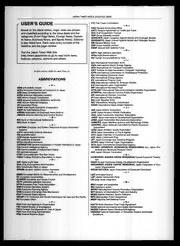
The Japan Times 2006: Index
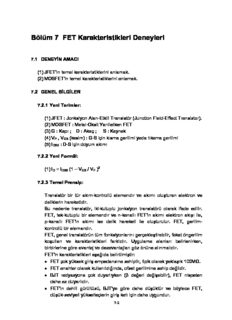
Bölüm 7 FET Karakteristikleri Deneyleri

Bölüm 2 sayfa 1.backup.fm

Bölüm 10 Kronik böbrek hastalığı
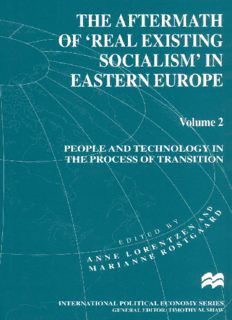
The Aftermath of ‘Real Existing Socialism’ in Eastern Europe: Volume 2: People and Technology in the Process of Transition
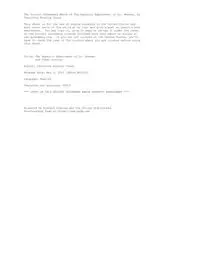
The Hypnotic Experiment of Dr Reeves by Charlotte Rosalys Jones
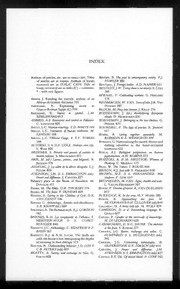
Man 1993: Vol 28 Index
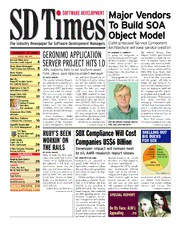
SD Times Issue 142
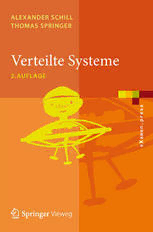
Verteilte Systeme: Grundlagen und Basistechnologien
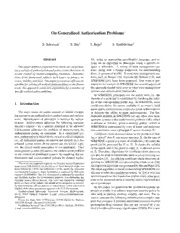
DTIC ADA449059: On Generalized Authorization Problems

CA--LIFORNIA INSTITUTE

Avertissements Agricoles - Grandes cultures - Centre - 1993 - 13

Grundlagenforschung zur Entwicklung von umweltfreundlichen Schlacken für das Elektro-Schlacke-Umschmelzverfahren
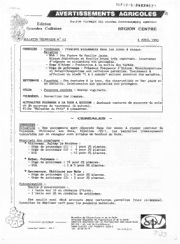
Avertissements Agricoles - Grandes cultures - Centre - 1993 - 12

